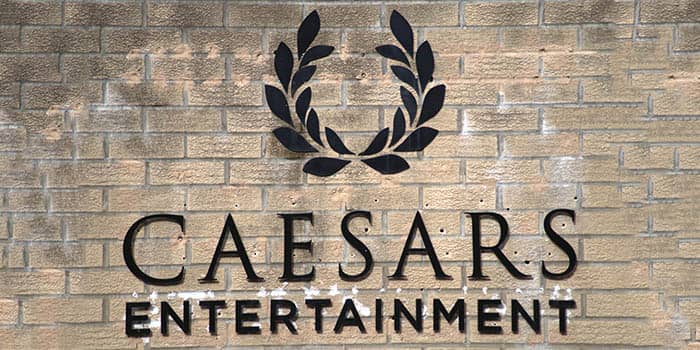Fact-checked by Angel Hristov
Caesars Entertainment Posts Its Q2 Operating Results
A large portion of Caesars Entertainment’s growth came from its digital sector, but weaker Las Vegas occupancy rates had a slight negative impact on income

Caesars Entertainment highlighted progress in its digital division, offsetting growth in online gaming against softer results from its land-based hospitality operations in Las Vegas.
The Digital Segment Saw a Positive Development
Caesars Entertainment CEO Tom Reeg stated that the Caesars Digital segment delivered one of its strongest quarters to date. He explained that the momentum is steadily progressing toward the financial targets the company set back in 2021. This digital success was supported by the operator’s strategic use of its Caesars Rewards member database to drive customer acquisition and retention across its online channels.
Caesars Digital posted revenue of $343 million, marking a 24.3% rise from $276 million in Q2 2024. Adjusted EBITDA for the digital segment doubled year-over-year, reflecting the company’s ongoing expansion in regulated US sports betting and iGaming markets. For the quarter, Caesars reported total net revenue of $2.9 billion, reflecting a 2.9% increase on a comparable basis from $2.8 billion in the previous year.
Regional revenues grew year-over-year, fueled by the addition of two new properties and strategic reinvestment in the Caesars Rewards customer database. The company also introduced a universal digital wallet and an in-house player account management system in Nevada, improving the overall customer experience.
Some Stats Diminished Compared to Last Year
Unfortunately for Caesars, its Las Vegas segment saw weaker market demand, with occupancy falling to 97% compared to 99% the previous year. The Regional segment was weighed down by several one-off factors, including construction disruptions and a major lawsuit settlement.
Las Vegas gaming faced a tough year-over-year comparison, leading to reduced table games volume and hold. The summer season in Las Vegas is expected to remain soft, with a similar decline forecasted for the third quarter. International business, especially from Canada, was weaker, contributing to a drop in room nights.
What’s Caesars’ Debt Situation?
The operator continued its focus on debt reduction during the quarter, with chief financial officer Bret Yunker outlining a refinancing transaction completed in July that will lower annual borrowing costs.
Yunker explained, the company used proceeds from the $225 million monetization of its WSOP seller note, along with a draw from its revolving credit facility, to fully redeem $546 million of its 8.125% senior unsecured notes, which are due in 2027. This redemption is expected to reduce annual interest expenses by $44 million. As of June 30, 2025, total outstanding debt amounted to $12.27 billion, with net debt at $11.29 billion. Cash and cash equivalents increased to $982 million, up from $866 million at the end of 2024.
The company’s total available liquidity reached $3.08 billion, including cash on hand and unused capacity under its revolving credit facilities. This strong liquidity position supports ongoing investment in digital initiatives and enhancements across its land-based properties.
Stefan Velikov is an accomplished iGaming writer and journalist specializing in esports, regulatory developments, and industry innovations. With over five years of extensive writing experience, he has contributed to various publications, continuously refining his craft and expertise in the field.

















